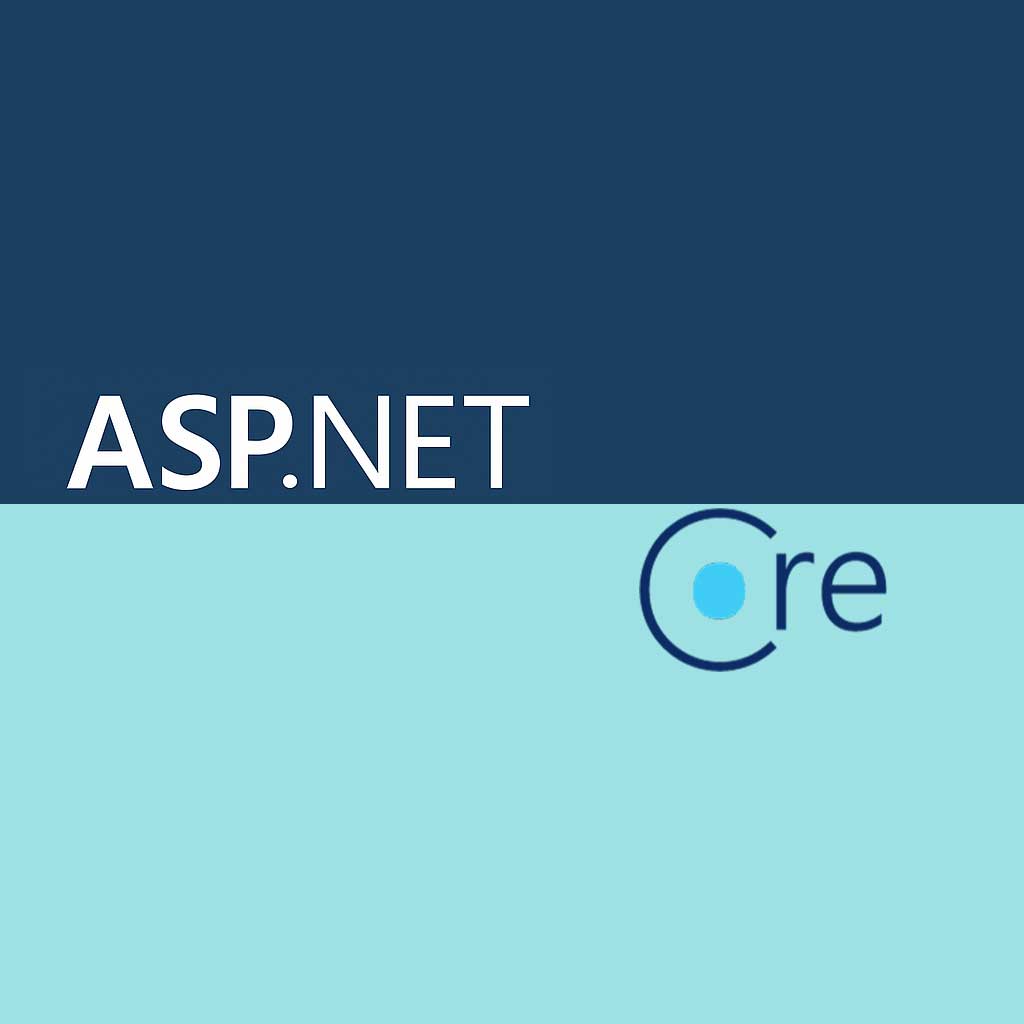1. Introduction to ASP.NET Core
ASP.NET Core is a cross-platform, high-performance framework for building modern web applications. It supports MVC, API development, microservices, authentication, and more.
Why Choose ASP.NET Core?
✅ Cross-platform (Windows, Linux, macOS)
✅ Open-source and high-performance
✅ Supports dependency injection and middleware
✅ Built-in security and authentication
✅ Seamless integration with databases and cloud services
2. Setting Up the Development Environment
Install Required Tools
- Visual Studio 2022 (or Visual Studio Code)
- .NET SDK (latest version)
- SQL Server (for database)
- Postman or Swagger (for API testing)
Creating Your First ASP.NET Core Project
- Open Visual Studio and select Create a new project.
- Choose ASP.NET Core Web App (MVC or API).
- Configure project name and click Create.
- Run the project using
dotnet runto check setup.
3. Understanding the ASP.NET Core Architecture
Project Structure
- Controllers/ – Handles user requests.
- Models/ – Defines data structures.
- Views/ – UI (for MVC projects).
- wwwroot/ – Static files (CSS, JS, Images).
- appsettings.json – Configuration settings.
- Program.cs – Configures the application.
Middleware and Dependency Injection
Middleware processes requests and responses. Example:
app.Use(async (context, next) => {
Console.WriteLine("Middleware before request");
await next();
Console.WriteLine("Middleware after response");
});
4. Building a Web Application with MVC
Creating a Controller
public class HomeController : Controller {
public IActionResult Index() {
return View();
}
}
Creating a View (Index.cshtml)
<h1>Welcome to ASP.NET Core</h1>
Routing in ASP.NET Core
app.MapControllerRoute(
name: "default",
pattern: "{controller=Home}/{action=Index}/{id?}");
5. Working with Databases (Entity Framework Core & SQL Server)
Setting Up Database Connection
- Install EF Core package:
dotnet add package Microsoft.EntityFrameworkCore.SqlServer - Configure
appsettings.json:"ConnectionStrings": { "DefaultConnection": "Server=your-server;Database=your-db;User Id=your-user;Password=your-password;" } - Add DbContext in
Program.cs:builder.Services.AddDbContext<ApplicationDbContext>(options => options.UseSqlServer(builder.Configuration.GetConnectionString("DefaultConnection"))); - Create a model:
public class Product { public int Id { get; set; } public string Name { get; set; } public decimal Price { get; set; } } - Create database migration:
dotnet ef migrations add InitialCreate dotnet ef database update
6. Building a REST API in ASP.NET Core
Creating an API Controller
[Route("api/[controller]")]
[ApiController]
public class ProductController : ControllerBase {
private readonly ApplicationDbContext _context;
public ProductController(ApplicationDbContext context) {
_context = context;
}
[HttpGet]
public async Task<ActionResult<IEnumerable<Product>>> GetProducts() {
return await _context.Products.ToListAsync();
}
}
Testing the API with Swagger
Enable Swagger in Program.cs:
builder.Services.AddEndpointsApiExplorer();
builder.Services.AddSwaggerGen();
Run the project and visit /swagger.
7. Authentication & Authorization
Adding Authentication Using OAuth/JWT
builder.Services.AddAuthentication(JwtBearerDefaults.AuthenticationScheme)
.AddJwtBearer(options => {
options.Authority = "https://your-oauth-provider.com";
options.Audience = "your-api-audience";
});
Use [Authorize] to protect API endpoints:
[Authorize]
[HttpGet]
public IActionResult GetSecureData() {
return Ok("This is a protected resource.");
}
8. Advanced Topics
Microservices with ASP.NET Core
- Use Docker to containerize ASP.NET Core apps.
- Implement gRPC or RESTful APIs for communication.
- Use RabbitMQ/Kafka for event-driven architecture.
Performance Optimization
- Enable Response Caching:
builder.Services.AddResponseCaching(); app.UseResponseCaching(); - Use Compression to reduce payload size:
builder.Services.AddResponseCompression();
Deployment to Cloud (Azure/AWS)
- Azure App Service: Publish from Visual Studio.
- Docker & Kubernetes: Deploy microservices.
- CI/CD Pipelines: Use GitHub Actions or Azure DevOps.
9. Conclusion
By following this tutorial, you have learned: ✅ How to build a web app using ASP.NET Core & MVC.
✅ How to integrate SQL Server with Entity Framework Core.
✅ How to build REST APIs with authentication and security.
✅ How to optimize, deploy, and scale your ASP.NET Core applications.
Now, start building your own ASP.NET Core projects!

